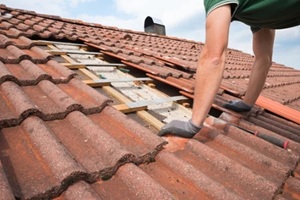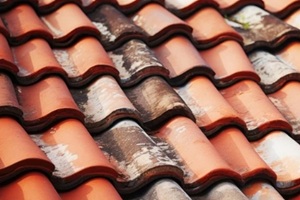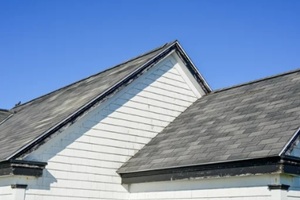
As roofs age and outlast their material warranties, they lose their integrity. The many benefits a good roof provides, including added protection, energy efficiency, and curb appeal, begin to fade. As your home’s primary shield against the elements, a well-maintained roof is foundational.
Postponing necessary roof replacement can result in severe financial burdens and potential safety hazards for both homeowners and residents. Carefully consider the following risks of delaying a roof replacement, including how to spot the signs of an aging roof before the wear and tear on your home impacts its safety.
1. Increased Risk of Water Damage
New roofs prevent water infiltration in several ways. Well-designed roofs filter runoff to the gutter system while siding protects the interior structure from excess moisture. As roofing materials age, rainwater and moisture accumulate more easily, leading to leaks that can eventually cause significant water damage.
The main risks of leaving water damage unrepaired include:
- Rotting or sagging wood, which weakens the structures of the roof, including decking and support beams
- Interior water damage to furniture, walls, paint, wallpaper, and more
- Mold growth, which can spread from the underlayment to the air conditioning units and pose a health risk to everyone in the house
- Costly repairs, which become inevitable if water damage isn’t addressed quickly
When wear and tear to the roof begins to increase the risk of water damage, homeowners may notice warning signs. For example, the ceilings may begin to stain or crack, revealing an accumulation of water in the inner structure of the home. Lighting fixtures may even begin to leak.
In response to these signs of damage, the roof needs to be inspected. Any delay increases the risk of costly and dangerous structural damage.
2. Lower Energy Efficiency and Higher Electric Bills
Roofs protect homes from inclement weather, but they also impact energy efficiency. Depending on the materials and their condition, roofs can reflect sunlight while holding in heat and air, allowing the HVAC system to regulate temperature more efficiently. When roofs become damaged, inside air can escape and outside air can get in, leading to poorer temperature regulation and higher electric bills as the HVAC struggles to compensate.

Homeowners may notice inconsistent temperatures in their homes, a feeling of draftiness, or a slow transition between temperatures after changing the setting. In many cases, a higher energy bill is the first sign homeowners notice that indicates their roof is no longer regulating their home efficiently.
Roof inspections often reveal key signs of wear and tear that impact temperature regulation, including worn, cracked, curled, or missing shingles.
3. Structural Damage and Potential Collapse
Homeowners who delay replacing their roofs risk serious structural damage, which can lead to safety hazards such as deteriorated decking, electrical wiring issues, and structural collapse. The longer the inspection and replacement are delayed, the more likely the structure will be permanently damaged by water, pests, or normal aging.
For example, as water accumulates due to damaged roofing materials, the underlying wooden decking may begin to rot and sag, eventually leading to collapse during the next heavy storm. Leaks around electrical wiring are also dangerous, potentially causing short circuits and fires.
Homeowners can conduct visual examinations of their roofs if safety is not a concern. However, a professional can provide a thorough inspection of the underlying structure of the roof, including the decking and underlayment, to assess the full extent of the damage and prevent further risk to the home and its residents.
4. Lower Curb Appeal and Property Value
Appearances matter when evaluating a home, especially since inspectors and potential buyers know that a damaged roof with missing shingles likely hides interior damage. When buyers see an aging, neglected roof, they may lower their bid in preparation for a potential roof replacement.
In addition to lowering curb appeal, delaying roof replacements can result in insurance hikes. Many insurers refuse to provide coverage for homes with outdated or damaged roofs, or they may increase premiums to account for more frequent damage claims. Homeowners planning to sell their home, refinance their mortgage, or buy new insurance should consider a roof replacement to protect their property’s value.
Contact an Experienced Contractor for Competitive Roof Replacement Services

An aging roof can cause lasting damage to a home, leading to expensive repairs and potential health hazards. Due to worn or damaged shingles, poorly maintained gutters, and other issues, water can accumulate and cause mold growth, rotting wood, electrical fires, or even structural collapse.
At Expert Exteriors, our team of contractors inspects roofs in properties across Maryland and Northern Virginia. We understand that many homeowners delay roof replacements to save money, which is why we offer competitive quotes on replacements and material upgrades for no extra cost. Our team provides high quality and fast service at a low price. Contact our team today to learn how we can help with your roof to prevent costly damage to your home.
Schedule Estimate
"*" indicates required fields
